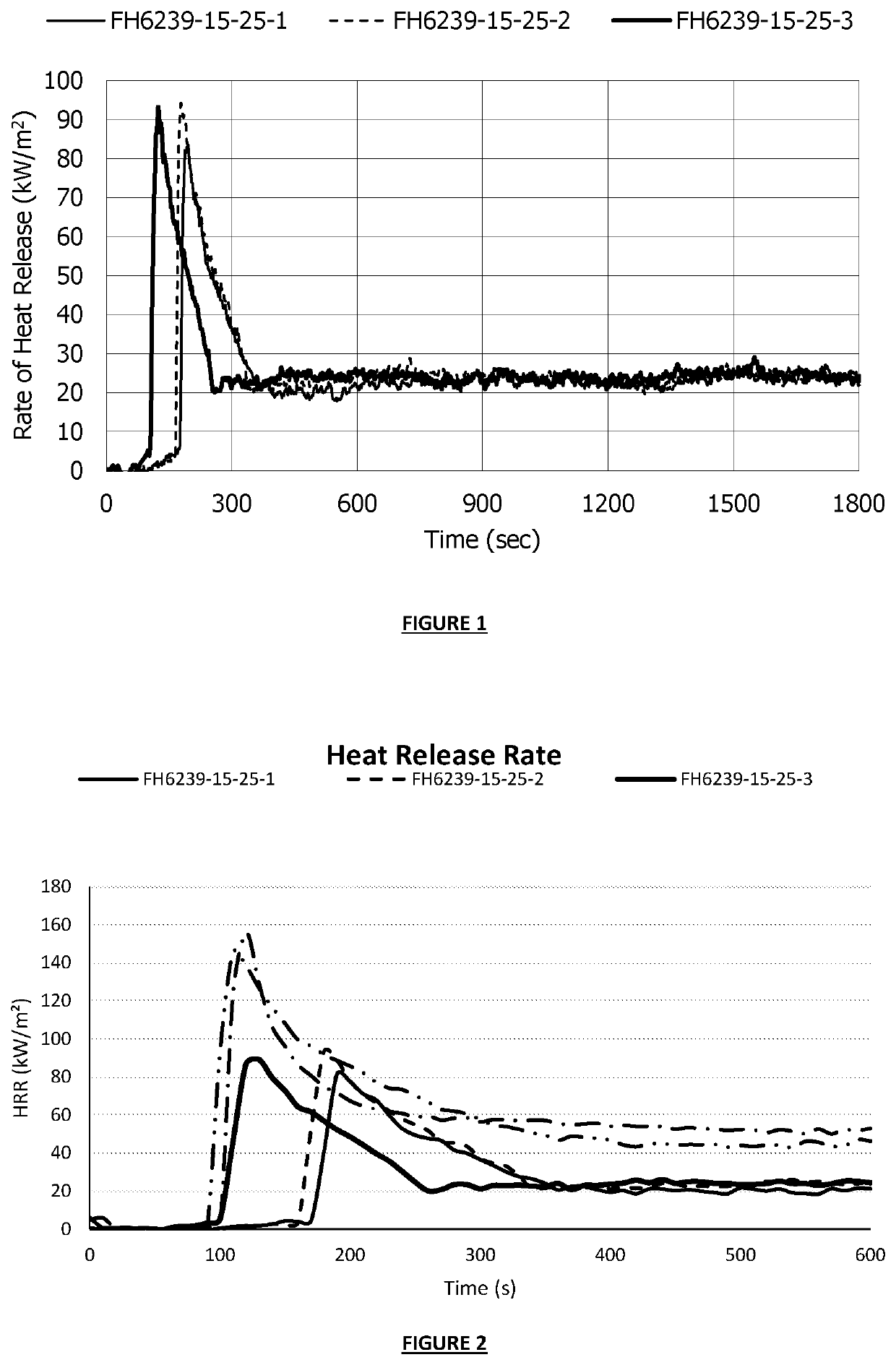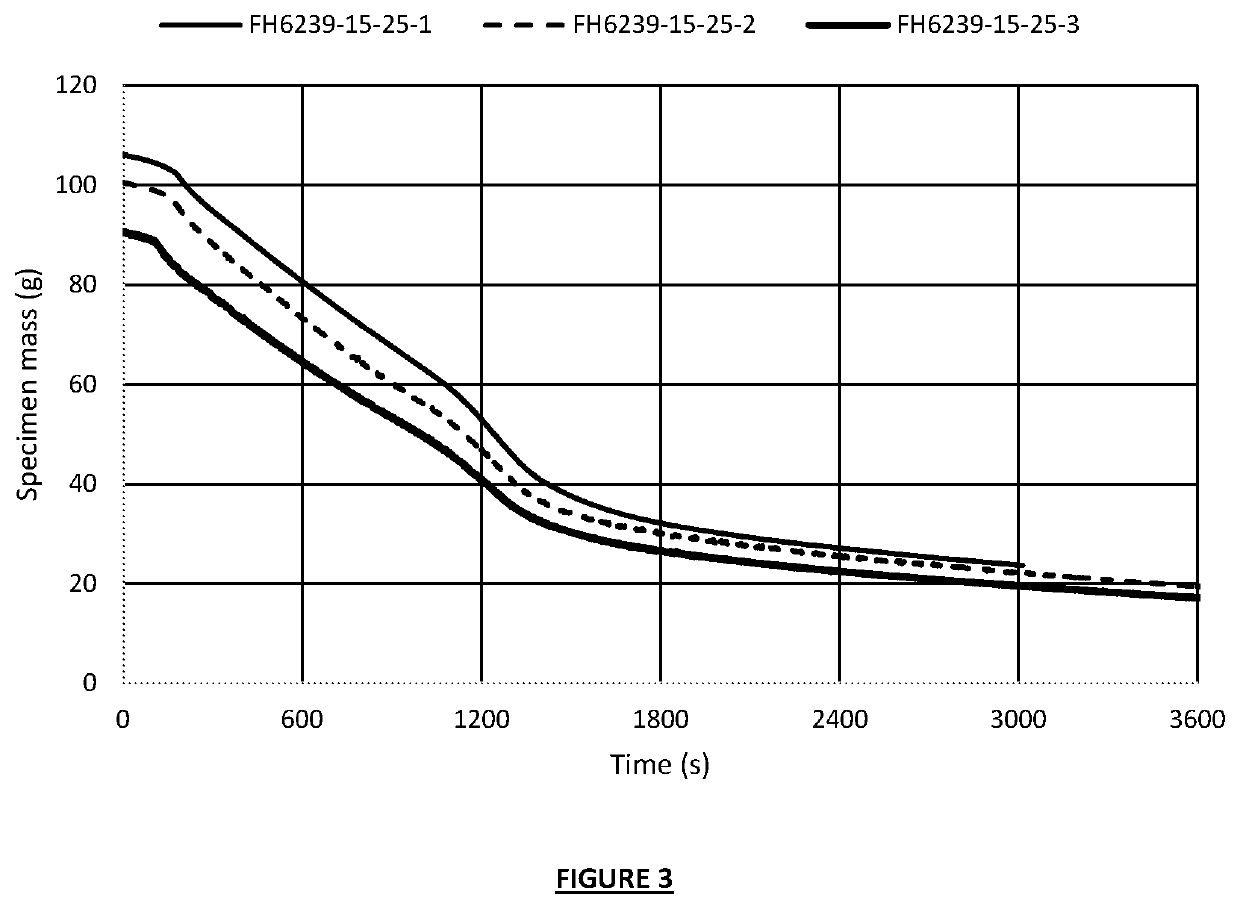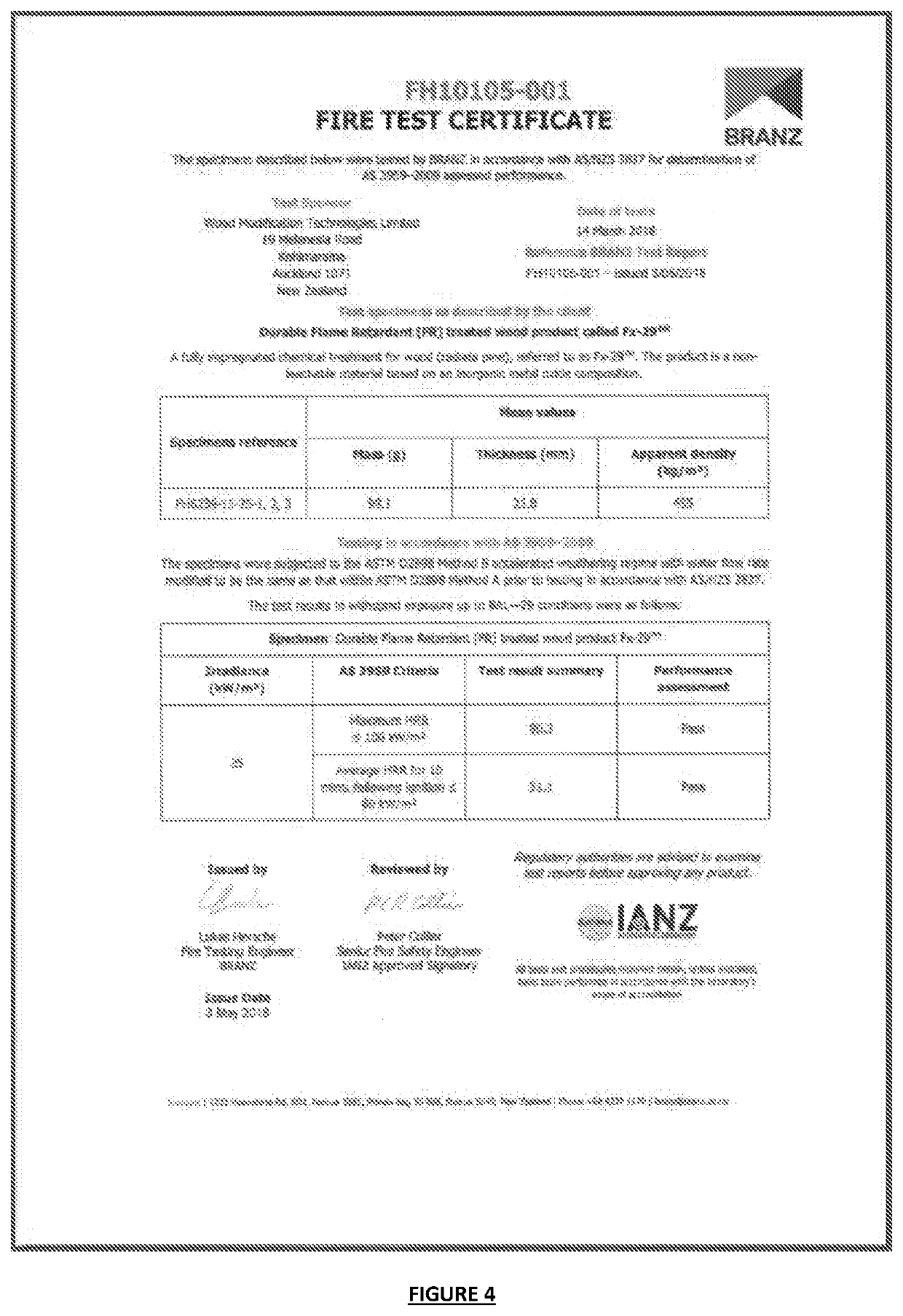Enhanced performance of wood and engineered wood products using combined durability and flame retardancy
a technology of engineered wood and enhanced durability, applied in the direction of wood heating, manufacturing tools, impregnation spraying apparatus, etc., can solve the problems of limited value of flame retardancy [fr] on its own in outdoor applications, the lack of presence of wood and wood engineered products in bushfire-prone areas, and the failure of current heat treatment and chemical treatment processes applied to most wood species to achieve combined durability and meet the combined level of durability. achieve the effect of enhancing durability and flame retardancy
- Summary
- Abstract
- Description
- Claims
- Application Information
AI Technical Summary
Benefits of technology
Problems solved by technology
Method used
Image
Examples
working examples
[0074]The above described enhanced performance of wood and engineered wood products (EWP) using varying combinations of wood preservatives (durability) and flame retardants [FR] are now described by reference to specific examples.
example 1
Durable Flame Retardant Chemical Formulation
[0075]The durable Flame Retardant [dFR] product formulation consists of a durable component and a Flame Retardant [FR] component which combine to produce a single phase formulation called “working solution” that is further impregnated into the wood and fixed via heat process producing a durable Flame Retardant [dFR] treated wood product. The durable and Flame Retardant components are outlined in below, as is Example 1 and 2 of product formulations.
[0076]The durable Flame Retardant chemical formulation comprises:[0077]1. Durable component comprising of a range of wood preservatives used in the control of fungal decay, mould and insect attack (termites) attack. The range of wood preservatives extends to both copper and non-copper based formulations, the copper based formulations include;—Copper Chrome Arsenate (CCA), dissolved Copper Azoles (dCA), micronized Copper Azoles (mCA), Alkaline Copper Quaternary (ACQ), micronized Copper Quaternary ...
example 1a
ed (Durable) Flame Retardant Formulation
[0080]28 g of sodium aluminate [Na2Al2O4] is dissolved in a solution of 3 g of sodium gluconate (salt of gluconic acid) and 75 g of water to produce a clear and stabilised liquid sodium aluminate solution. Then 2 g dissolved copper azole (9% m / m—Copper, 0.5% m / m—azole) is added to the stabilised sodium aluminate solution to produce a durable Flame Retardant chemical formulation (working solution), as further outlined in Table 1. below:
TABLE 1Example of a durable Flame Retardant (working solution) below:Chemical Ingredients% ContentActual ContentSodium Aluminate [SA] 28%28g*Salt of gluconic acid—sodium gluconate 3%3gCopper azole (soluble copper azole) 2%2gBalance water 67%Balance waterTotal100%100ml*Stabiliser agent is salt of gluconic acid (sodium gluconate)
PUM
 Login to View More
Login to View More Abstract
Description
Claims
Application Information
 Login to View More
Login to View More - R&D
- Intellectual Property
- Life Sciences
- Materials
- Tech Scout
- Unparalleled Data Quality
- Higher Quality Content
- 60% Fewer Hallucinations
Browse by: Latest US Patents, China's latest patents, Technical Efficacy Thesaurus, Application Domain, Technology Topic, Popular Technical Reports.
© 2025 PatSnap. All rights reserved.Legal|Privacy policy|Modern Slavery Act Transparency Statement|Sitemap|About US| Contact US: help@patsnap.com



